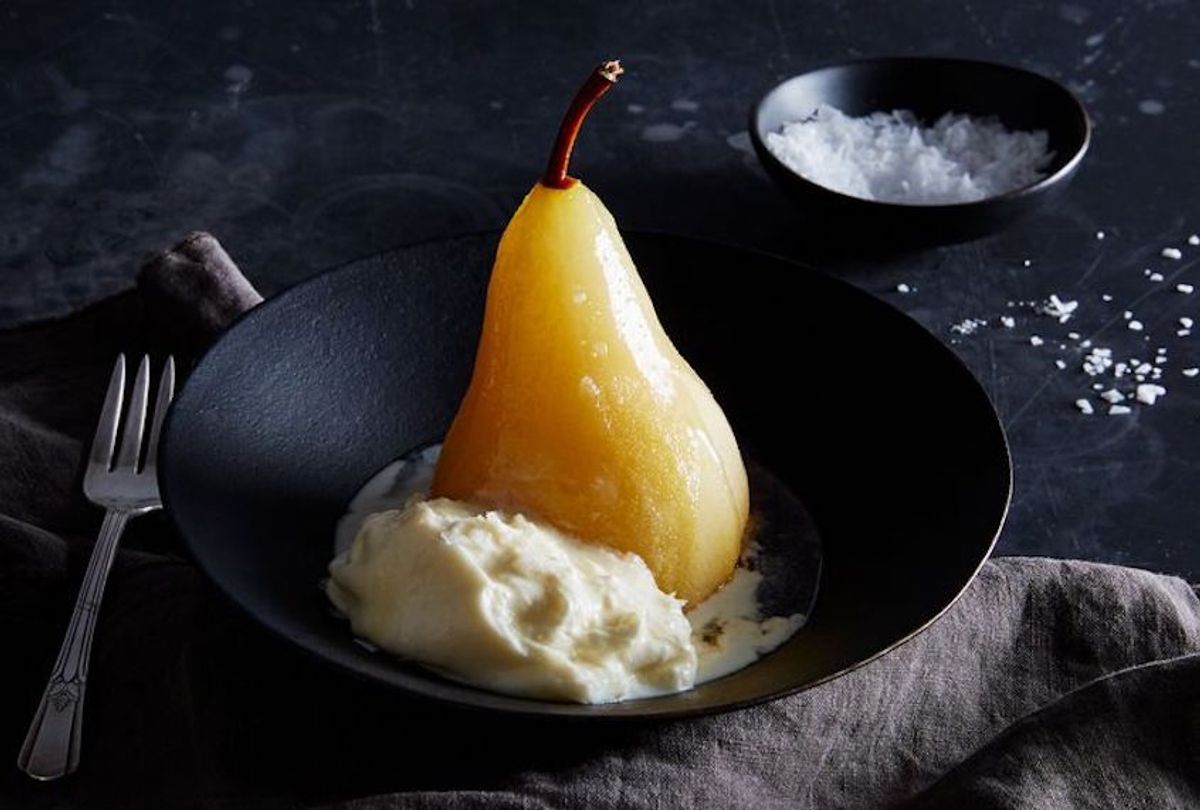What is poaching, anyway? These days, the technique is less than all-the-rage for the home cook. (Just compare searched cooking terms from the last year and you’ll begin to get an idea.) If you haven’t encountered poaching beyond those eggs you ordered at brunch a couple weeks ago, Julia Child explains the term better than I could in "Mastering the Art of French Cooking":
“Food submerged and cooked in a liquid that is barely simmering or shivering. The term can also be used poetically for such things as ‘chicken breasts poached in butter.’”
Well, that doesn’t sound so hard. If boiling is all about intensity, poaching is all about gentleness. This comes in handy for easy-to-overcook ingredients, like chicken, fish, or even fruit. The burbling, babbling liquid offers moisture-loss insurance and gives you more control when it comes to timing.
It also gives you more control when it comes to flavor. While some poaching liquids are no more than water (such is the case for eggs), others are chock-full of extra ingredients. Savory poaching liquids might call for broth or oil instead of water, plus garlic, herbs, and spices. Sweet ones usually turn to white or red wine, sugar, and aromatics (like cinnamon sticks, whole cloves, and lemon peels).
As cookbook author David Lebovitz writes on his blog, you’d be hard-pressed to find a better fruit for poaching than winter pears: Not only do they maintain their shape, but “poaching also improves the taste of ho-hum pears.”
Which is to say, a quick simmer is all it takes to go from firm and lackluster to sweet, tender, and juicy, like a summer peach. I love the way poached pears are soft and spoonable, as if plucked from a can (I mean this in a good way) — and they come with their own sauce to boot.
But, this being Big Little Recipes and all, we can’t just throw around aromatics willy-nilly. So, instead of using wine and infusing it with additional ingredients, we’ll turn to an almost-wine where the aromatics come included.
Come on down, dry vermouth! This looks like white wine, but is infused with botanicals (herbs and spices, such as wormwood, coriander, and chamomile) and fortified with unaged brandy. Which means vermouth-poached pears will be deeply flavored with no extra ingredients.
Using honey in the poaching liquid instead of sugar serves a similar purpose. While sugar only brings sweetness, honey brings sweetness and flavor. Opt for a classic clover variety for something mild and floral. Or upgrade to a dark buckwheat for something malty and nutty. You could even use maple syrup or sorghum.
So we've got what we're poaching and the poaching liquid covered. This just leaves us with the topping. Convention will steer you toward whipped cream, ice cream, or even crème fraîche. But why use any of that when you could use cheese? Yep, cheese. There’s a reason cheeseboards so often include grapes or dried apricots or jam; a little sweetness balances all the creamy savoriness. Here, we’re using a little creamy savoriness to balance all the sweetness.
Enter: burrata, the creamiest cheese in all the land. I like to think of this as mozzarella gone rogue. It looks run-of-the-mill from the outside, but its center is filled with cheese curds and cream, like mozzarella’s answer to the molten chocolate cake. I love it with poached pears because it checks all the boxes of whipped cream, ice cream, and friends — it’s milky, creamy, and rich, with a pillowy texture — but skips the sweetness and adds a subtle savoriness that I adore in desserts.
With a big pinch of flaky salt on top, I'm not really sure if this is a dessert or a cheese course. But why should we have to decide these things anyway? The important thing is that it’s easy to make, impressive to serve, and very delicious to eat.
Honey-Poached Pears With Burrata
Serves: 6
Ingredients6 Bosc pears, firm (ripe in a few days), stem still attached
1 (750-ml) bottle dry vermouth
1 cup water
6 tablespoons (128 grams) honey
1 pinch flaky salt, plus more to finish
12 ounces burrata, divided into 6 equal portions
Click here to read the full recipe.




Shares